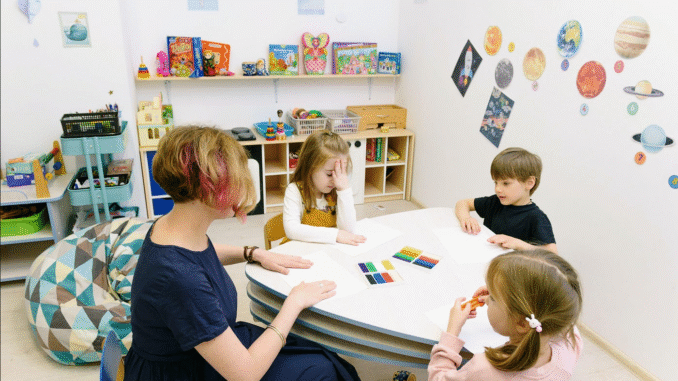
10 Proven Strategies to Boost Student Learning in Any Classroom
In today’s fast-paced educational environment, student engagement and academic performance remain top priorities for teachers, administrators, and parents alike. However, finding effective methods to improve student learning can be a challenge. Whether you’re teaching in-person, online, or in a hybrid setting, employing the right strategies can make all the difference.
Here are 10 proven strategies that can boost student learning in any classroom—regardless of grade level or subject matter.
1. Foster a Positive Learning Environment
A welcoming and supportive classroom environment lays the foundation for effective learning. Students who feel emotionally safe and respected are more likely to participate and take intellectual risks. Create this atmosphere by:
- Encouraging open communication
- Celebrating student efforts
- Establishing clear behavior expectations
- Promoting inclusivity and mutual respect
Even simple gestures like greeting students at the door or using their names regularly can contribute to a more positive classroom culture.
2. Incorporate Active Learning Techniques
Passive lectures often lead to disengaged students. Active learning, by contrast, involves students directly in the learning process. Techniques include:
- Think-pair-share
- Group discussions
- Problem-solving activities
- Peer teaching
- Interactive quizzes
These methods encourage critical thinking, collaboration, and a deeper understanding of the material.
3. Use Formative Assessments Regularly
Formative assessments help teachers track student progress and adjust instruction accordingly. Unlike summative assessments (like final exams), formative tools include:
- Exit tickets
- Quick polls
- Concept maps
- Short quizzes
These assessments provide immediate feedback and help identify learning gaps before they become larger issues.
4. Differentiate Instruction
No two students learn the same way. Differentiated instruction means tailoring teaching methods to meet diverse student needs. This can involve:
- Varying content difficulty levels
- Offering choices in assignments
- Providing visual, auditory, and kinesthetic learning options
- Using flexible grouping
By respecting different learning styles, teachers can better engage all students.
5. Integrate Technology Thoughtfully
Technology can enhance learning when used with purpose. Tools like educational apps, digital whiteboards, and learning management systems (LMS) can:
- Encourage interactive participation
- Support blended learning models
- Facilitate collaboration through shared documents
- Provide immediate feedback through online quizzes
However, avoid using technology just for the sake of it. Always ensure it supports your learning objectives.
6. Encourage Metacognition and Self-Regulation
Metacognition—thinking about one’s own thinking—helps students become independent learners. Teach your students to:
- Set goals
- Monitor their understanding
- Reflect on what they’ve learned
- Adjust their strategies
Tools like learning journals, reflection prompts, and progress checklists can foster this growth mindset and enhance self-regulation.
7. Build Strong Student-Teacher Relationships
Research consistently shows that strong relationships between students and teachers improve learning outcomes. Build trust and rapport by:
- Showing genuine interest in students’ lives
- Offering regular, meaningful feedback
- Being approachable and empathetic
- Maintaining consistency and fairness
When students feel that their teacher believes in them, their motivation and performance often rise significantly.
8. Connect Lessons to Real Life
Relevance fuels engagement. Help students see the value of what they’re learning by connecting lessons to the real world. This could involve:
- Using current events in social studies
- Tying math problems to real-life scenarios
- Discussing career applications of science topics
- Integrating community-based projects
When students understand the “why” behind what they’re learning, their intrinsic motivation increases.
9. Promote Collaboration and Peer Learning
Learning is often more effective when done collaboratively. Peer learning not only reinforces material but also builds communication and teamwork skills. Incorporate activities such as:
- Group projects
- Peer editing sessions
- Study buddies
- Class debates
Be sure to structure these activities to ensure accountability and equitable participation.
10. Maintain High Expectations with Support
Set high but achievable expectations for all students. When students know their teacher believes in their potential, they often rise to meet that standard. Pair high expectations with:
- Clear guidelines
- Timely feedback
- Scaffolding (breaking tasks into smaller, manageable steps)
- Encouragement and emotional support
This balance helps students grow without feeling overwhelmed.
Final Thoughts
Improving student learning isn’t about following a one-size-fits-all approach. It’s about using proven strategies that align with your students’ needs, learning styles, and educational goals. Whether you’re a veteran teacher or just starting your career, implementing these 10 evidence-based strategies can lead to noticeable improvements in student engagement, comprehension, and academic success.
Remember, the most effective teachers aren’t the ones with the fanciest tools or the flashiest presentations. They’re the ones who are committed to constant growth, connection, and creativity in the classroom.

